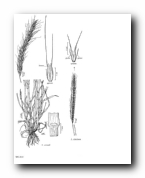
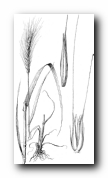
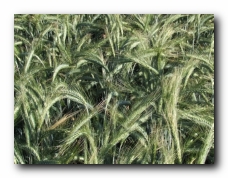
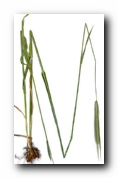
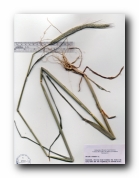
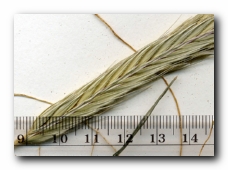
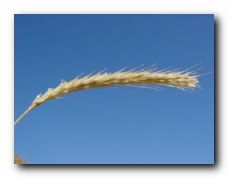
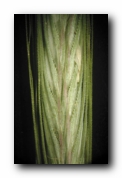
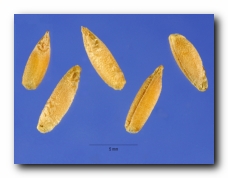
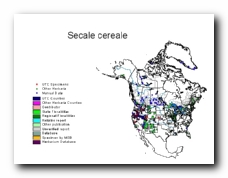
40" Rows:
Broadcast:
60 pounds pure live seed per acre
90 pounds pure live seed per acre
Sandy:
Loam:
Clay:
High
High
Moderate
Habit: Annual or winter annual.
Culms: 1-2 m. tall, erect, usually glaucous, glabrous, or pubescent
below the spike.
Blades: 30 cm. long, more or less, 6-13 mm. wide, scabrous, flat, auricled.
Sheaths: Usually shorter than the internodes.
Ligule: Membranous, about 1 mm. long.
Inflorescence: Spike 10-15 cm. long, dense, 4-angled, more slender than
wheat, nodding rachis internodes pubescent on the edges.
Spikelets: Usually 2-flowered, or the third rudimentary floret above,
solitary at each node,
alternate, placed flatwise against the rachis.
Glumes: Narrow, rigid, wn-pointed, 1-nerved, scabrous on the keel,
with one edge toward the rachis.
Lemmas: Asymmetrical lanceolate, 5-nerved, sharply keeled, ciliate
on the keels and exposed margins, tapering into a long awn.
Fruit: Grain slightly compressed laterally, deeply furrowed, free,
pubescent at the apex.
Habitat: Waste places, roadsides, and old fields; escaped from cultivation,
but not persisting.
Use: A cultivated grain, winter pasturage, green feed, green manure,
and to a certain extent in public lawn mixtures.
Remarks: The common host plant of the fungus, ergot.
Special Notes:
Rye [Secale cereale] Information #2